How to kill the climbs on an eMTB
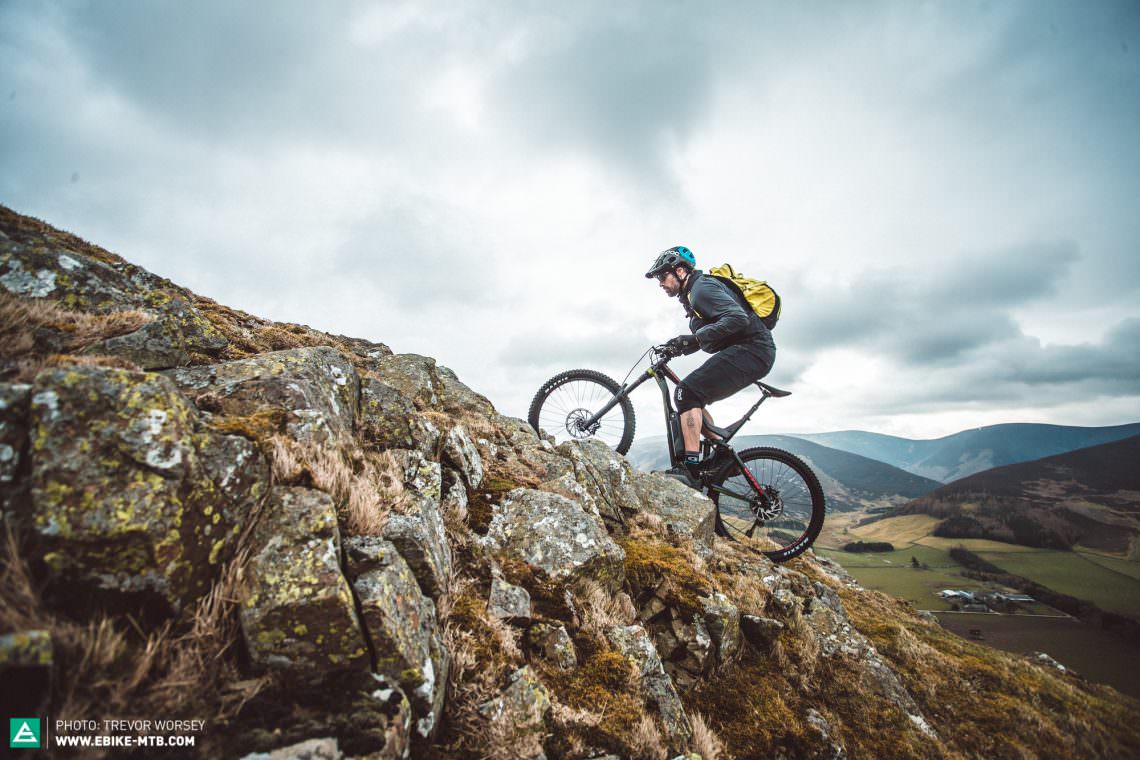
Modern eMTBs are incredibly versatile machines; capable of descending trails that would test a downhill bike and yet able to ascend the steepest and most technical of climbs. But are you making the most out of your bike’s abilities?
Chances are you’ve optimised your bike for going down but could your bike climb better? Sure, you have a motor but a more efficient climbing position will allow you to ascend trails that previously meant pushing and then get to the top with more energy to release on shredding back down.
We share the eMTB set-up secrets that will enable you to tackle the climbs with ease and confidence.
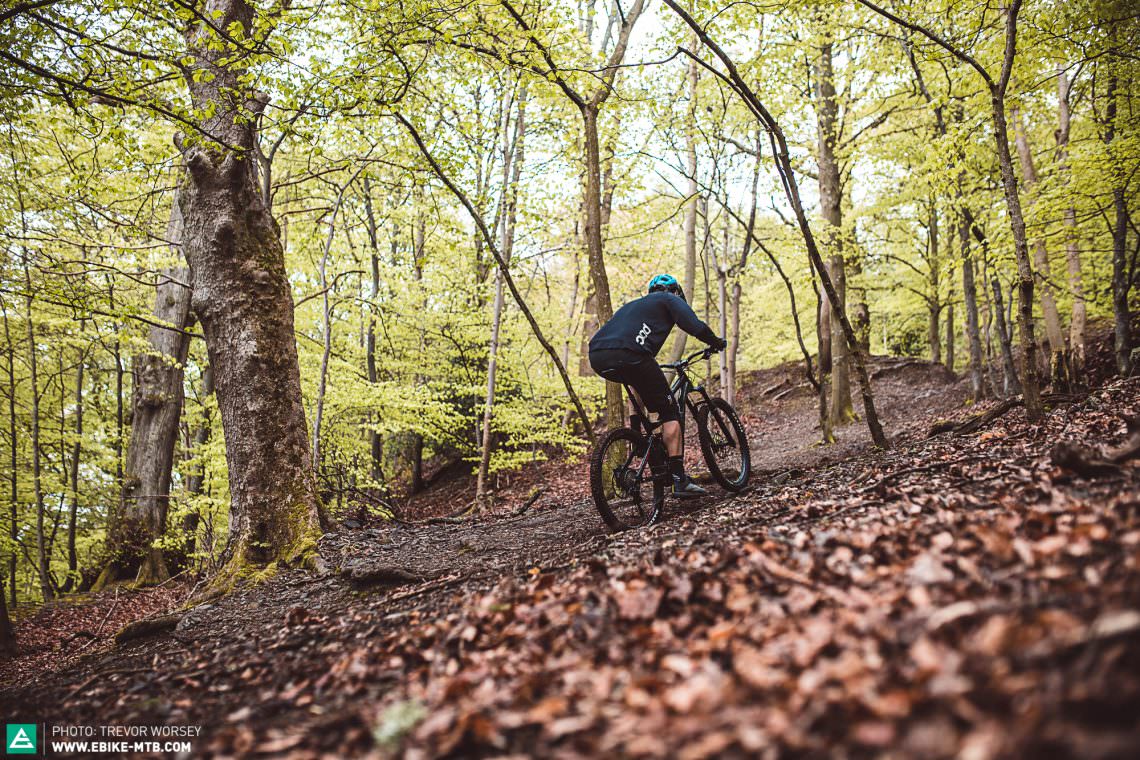
Climbing the stairway to heaven
Before a marketing executive got hold of it, some engineer once realised and noted that power is nothing without control, and that’s especially true of eMTBs. To get more climbing control, you need to improve traction; to achieve this we can tweak our eMTB and adjust how we use it.
Perfecting your riding position on an eMTB
One of the key factors in how a bike climbs when the gradient increases is your riding position. An upright and central position will be more comfortable for climbing steeper trails and give you more control on technical trails. The current geometry trend for longer reaches and steep seat angles pushes your weight forward, into a centralised position over the bottom bracket, pushing your posterior away from the centre of the rear wheel, giving you more traction at the rear and keeping the front wheel from coming up as you ascend. However, no matter what bike you are riding, there are a number of other factors to consider maximising your climbing ability.
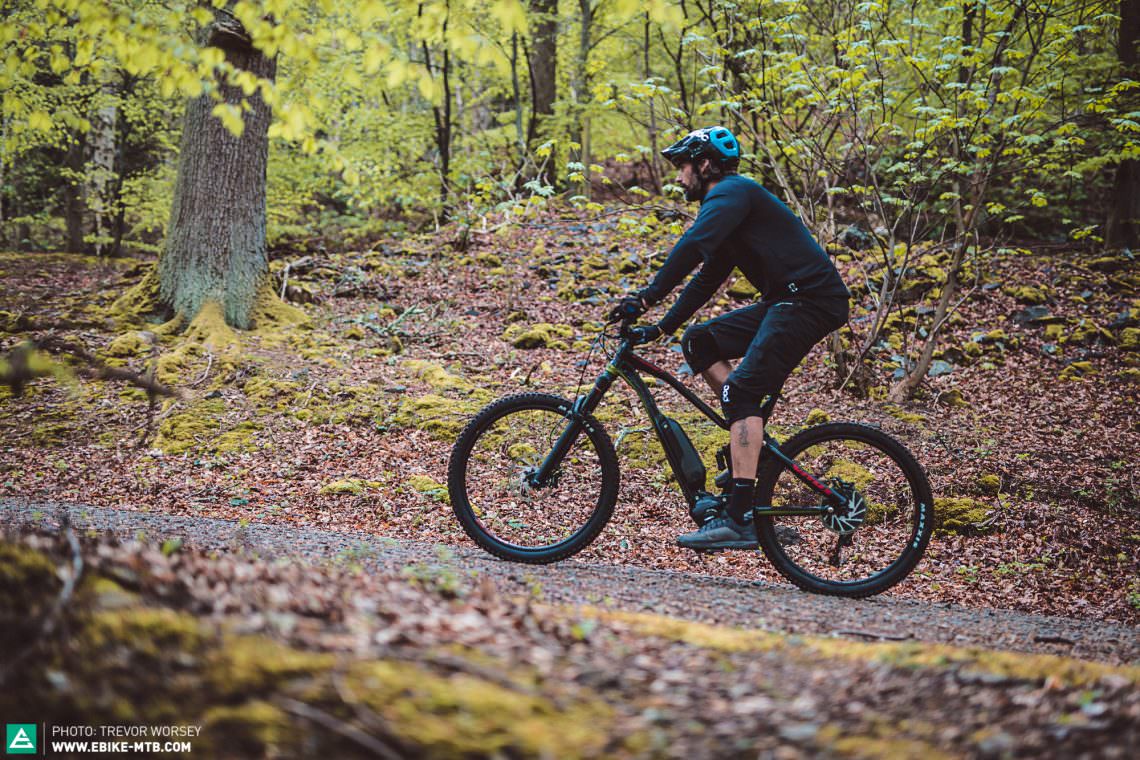
eMTB Saddle height
Incorrect saddle height can literally break you. Many riders run their saddle too low as they feel that they are better able to put their feet down quickly, but having your seat too low or too high and fully extending your leg while pedalling, will be inefficient and uncomfortable at best and, left unchecked, can cause damage to your knees and back in particular.
The basic rule when setting the most efficient saddle height for climbing is to adjust the seatpost, so that if you put your heel on the pedal when the crank arm is at the bottom of the stroke, your leg is straight but not locked out. With your heel still in place, pedal a few turns and if your heel breaks contact with the pedal then the saddle is too high. Now, when you naturally put the ball of your foot back on the pedal, your leg will have the correct bend at the knee.
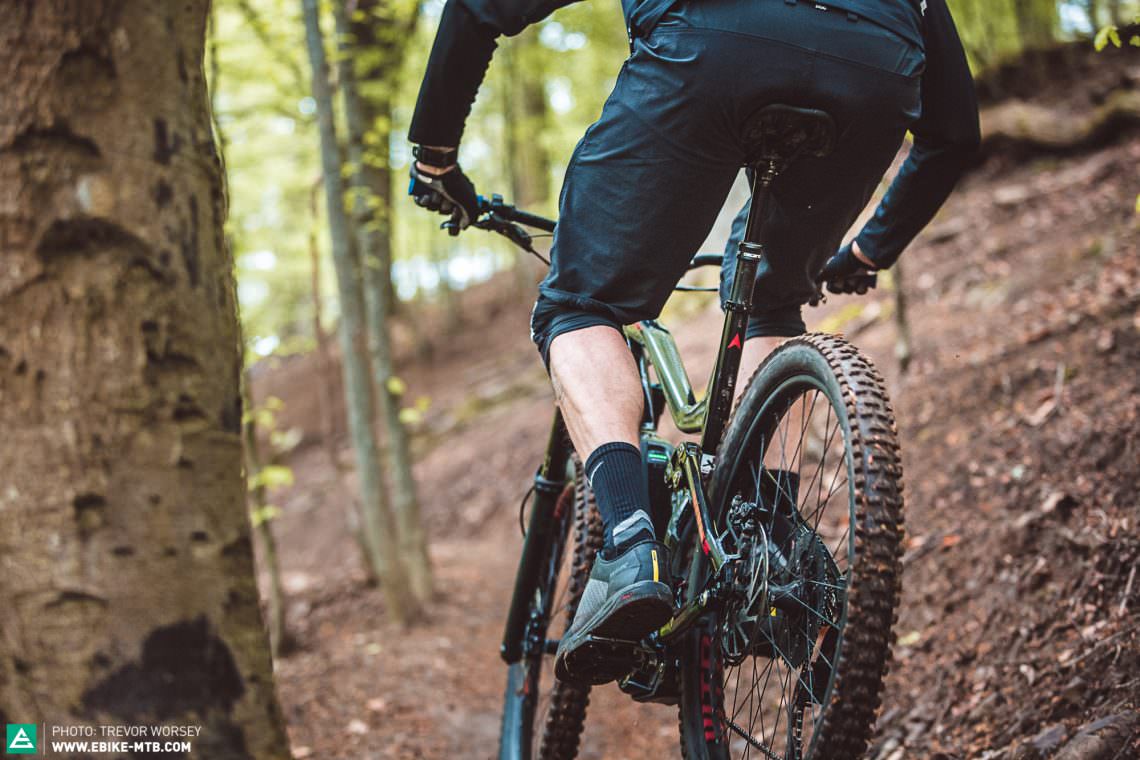
Aren’t droppers for descending?
Dropper seatposts ain’t just for downhills, they’re also super useful for climbing on an eMTB as you can set the saddle height to give you the most efficient pedalling position without sacrificing confidence on tricky sections. When tackling technical climbs, merely dropping your post by a few centimetres can have an instant effect on your ability to move around on the bike. Lowering your saddle will bring your weight lower and forward helping you to gain traction on both wheels while giving you confidence in case you need to eject!
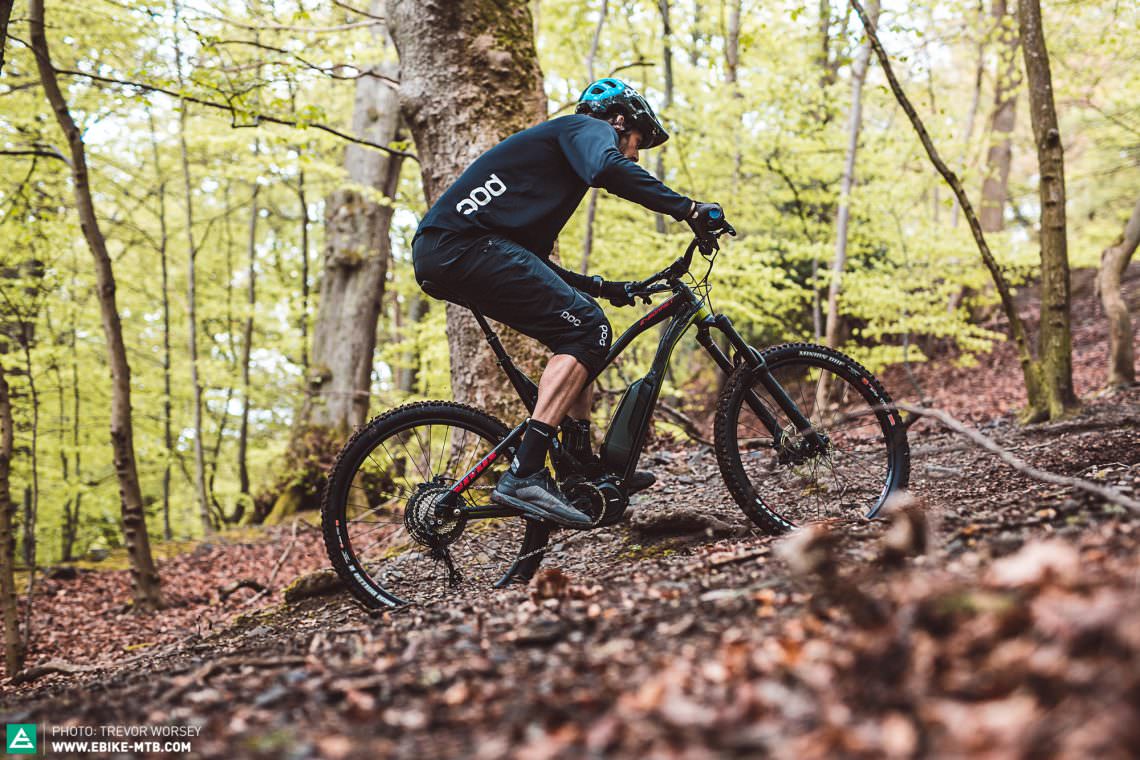
Bar and stem height
If you look at the ultimate climbing machine, a road bike, you will see that a low and forward position is preferred for keeping the front wheel firmly in its place on any gradient. This theory isn’t so black and white when it comes to setting up your cockpit for the far more complex requirements of riding an eMTB. Having your bars too far forward and low will cause the rear wheel will spin out and you will find it more difficult to get the front wheel off the ground. Bars set-up too high and far-back will reduce your control of the front wheel and cause the bike to rear up like a stallion on the climbs. If your bike wheelies or wanders off-line when you pedal uphill, you need to get your weight forward: a small increase in stem length will help the front wheel track better, without affecting the handling of the bike going down. Wide bars can also help on the climbs as they allow you to put more weight over the front wheel and give you more leverage when you have to muscle up steep sections.
If your weight feels too far back or you feel too stretched, try and move your saddle forward. By sliding the saddle forward on the seat post clamp, you shift your weight away from the rear wheel and over the bottom bracket, traction and control will be increased, especially on steep and loose terrain.
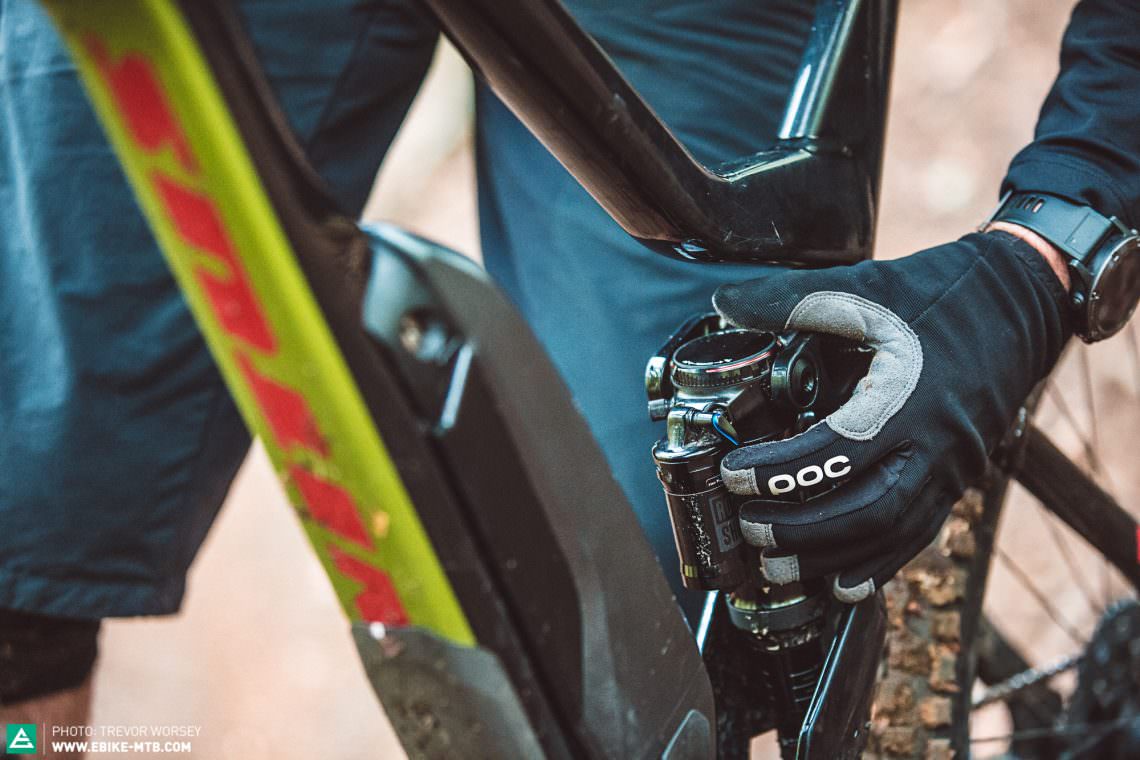
Lockout Verses Traction
Many full suspension bikes now come with a lockout or climbing platform to ‘improve’ climbing performance as it reduces the ‘bobbing’ effect of hard pedalling on the suspension system and increases pedalling efficiency. However, once the trail becomes rougher, pedalling efficiency on an eMTB becomes less important than traction. With the suspension active, your bike will roll more effectively as the bike conforms to the irregularities of the trail – rather than being bounced from bump to lump – so your eMTB works more efficiently, giving you more control and traction to put the power down and clean the climb.
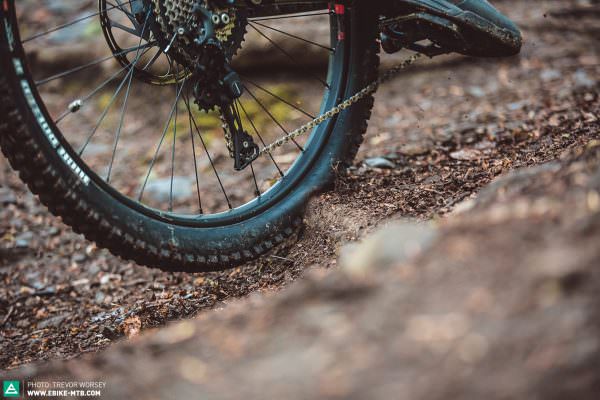
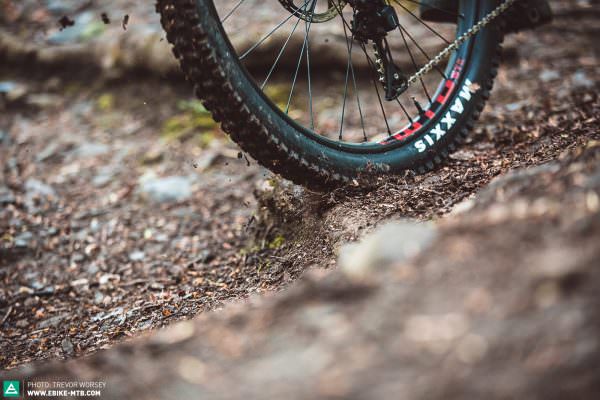
Rubber side down
Traditional thinking would suggest that light and hard tires, run at high pressures climb, accelerate and roll more efficiently. This may be true for smooth conditions, but for eMTBs, where the focus is on the challenge of climbing off-road, wider, softer tires run at lower pressures will roll better on rough trails and deliver the traction needed to stick to the terrain, as they are better able to conform to the trail features and grip even in wet or slick conditions. To work out the perfect tire pressure for you, follow our comprehensive guide to get rolling.
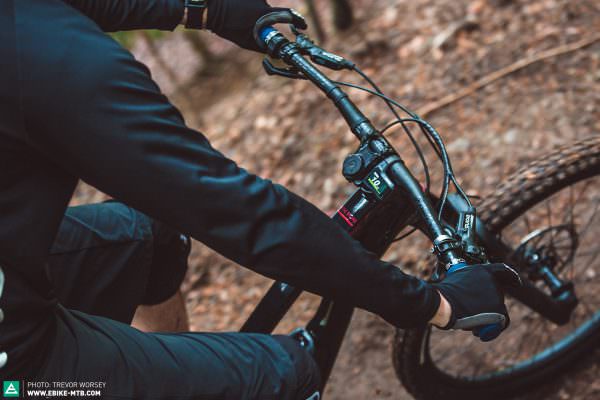
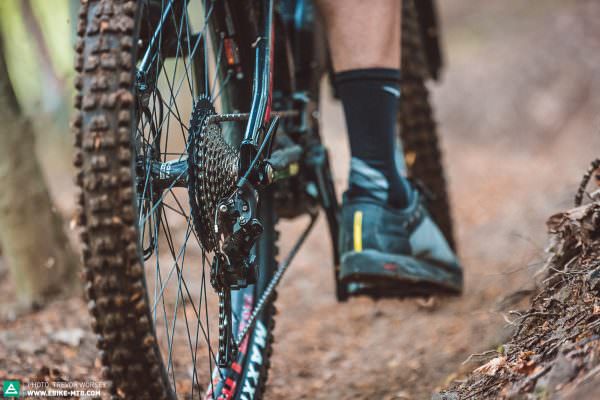
Choosing the right mode on your eMTB
How many riders see a steep climb and hit the boost mode before getting bucked off the back quicker than a drunk off a mechanical bull! Controlling high torque settings and low gears on a steep and loose climb is a challenge in itself. A more successful approach to tackling technical climbs is to exchange some assistance for the smoother power delivery of your eMTB’s tour, trail or eMTB mode. Although your muscles may temporarily feel the strain, these modes will give your climbing more control and be more energy efficient over the duration of a ride.
Grinding Gears
Choosing the right gear at the right time is critical to keep your legs spinning at the most effective cadence for your motor. Most systems are designed to work best at a cadence of between 80-90 rpm because we, as riders, work best at about 80-90 rpm. Spinning at this cadence allows you to smooth out the pedal action which results in consistent power to the wheels. Faster spinning can create wheel spin and a loss of traction, whereas a slow cadence can bog down the motor, which can feel like the assistance has switched off altogether; not what you want at the crux of the climb!
Shorter cranks will allow you to pedal through rougher terrain without clipping your pedals and give you a quicker cadence.

Dynamic climbing on an eMTB
Of course, technical climbing isn’t just about the bike, the rider must interpret the terrain, available grip and gradient and adjust their weight distribution so that each wheel has maximum traction. Your body position must be dynamic, with constant and fluid weight adjustments until you tap out at the summit: what this means is that, if the front end starts to get light and doesn’t track properly, weight must be shifted forward until you have control again; if the rear wheel starts to lose grip, weight must be shifted towards the rear to increase downwards pressure and increase traction. To do both at the same time requires upper body strength, as you pull yourself forward and down over the bars and push your backside further towards the rear of the saddle. Phew!
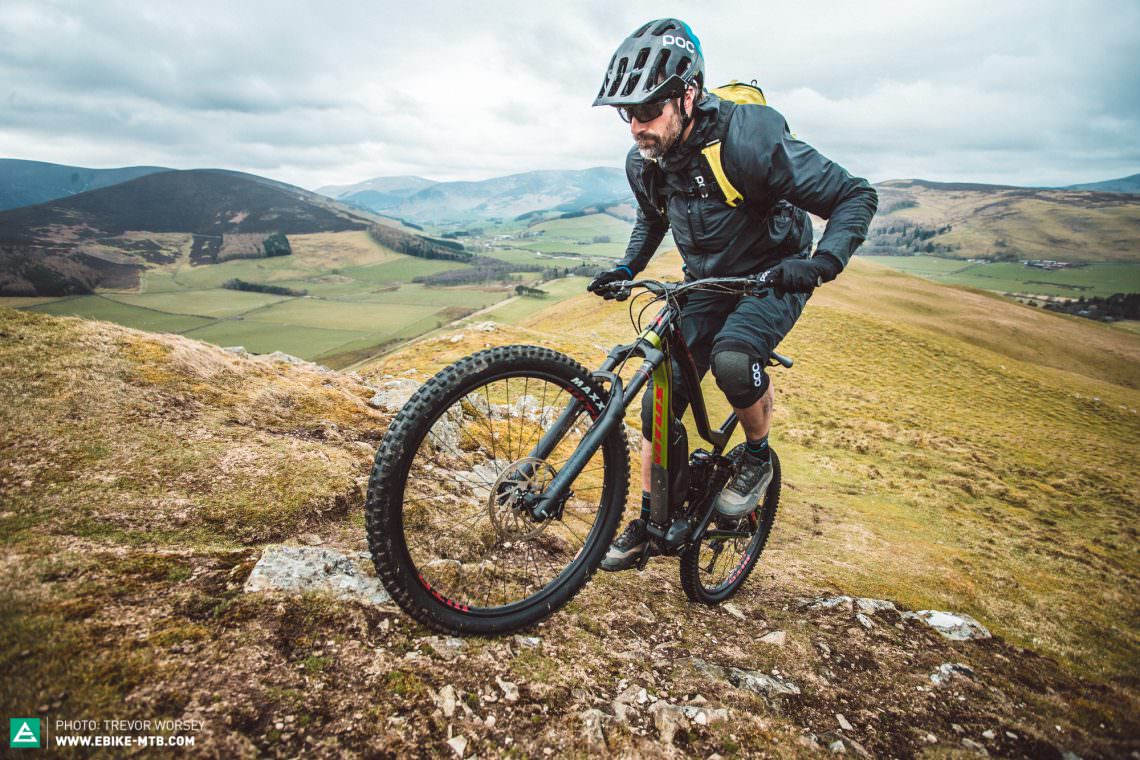
Use your new found knowledge to scale new heights on your eMTB and be a better climber than Spiderman driving a piste basher. But most importantly, keep pedalling, move those legs and the wheels will go forward!
Did you enjoy this article? If so, we would be stoked if you decide to support us with a monthly contribution. By becoming a supporter of E-MOUNTAINBIKE, you will help secure a sustainable future for high-quality cycling journalism. Click here to learn more.
Words: Thomas Corfield Photos: Trevor Worsey







